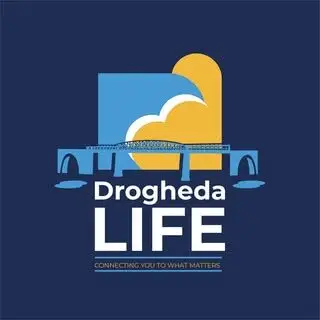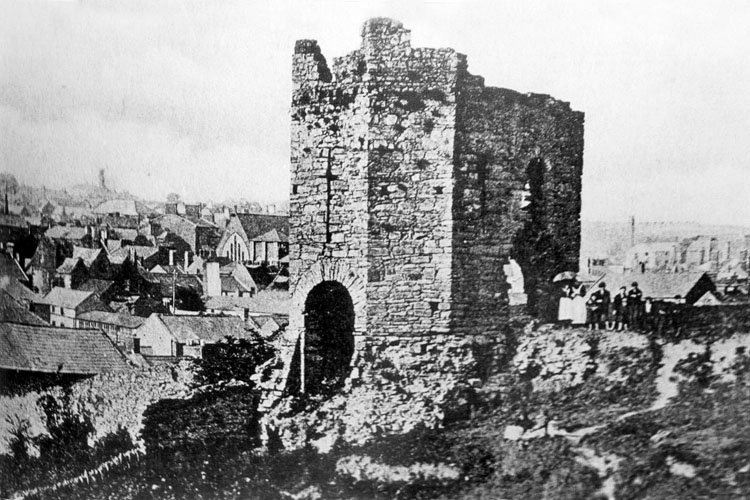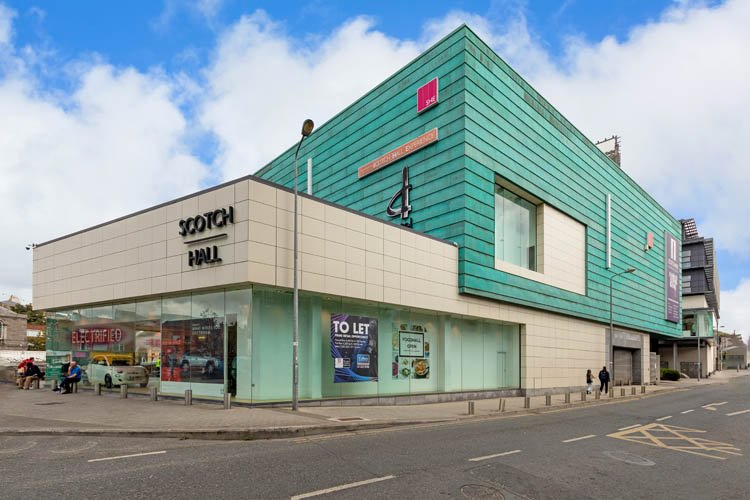By Sean Collins
Built in the 14th century, the Buttergate is a National Monument that forms part of the medieval town defences of Drogheda. The one remaining arch sits on the hill below Millmount, overlooking Drogheda Bus depot.
It’s in pretty poor shape and totally overgrown with briars but at least it is still there, or what’s left of it. It seems unbelievable nowadays, but in 1958 the Council decided to demolish at least part of the Buttergate!
It has been called the Buttergate by generations of Drogheda people but there is much speculation as to the origin of that name. The most popular theory is that it was named Buttergate because a levy or tax on butter was collected there in medieval times.
A local oral tradition held that the only objector was Mollie Reid, a local publican, who wanted the medieval remains saved to preserve the walled heritage of the town.
In the media Nano Reid, a local artist of note and sister of Mollie, worked alone to try and save the Buttergate. Nano appealed to the local paper to highlight the proposed demolition of the Buttergate.
Writing to the editor of the Drogheda Independent she said “one by one our local monuments are disappearing. The townspeople surely have some say in what becomes of their heritage.”
This, according to her local biographer Declan Mallon, earned her the nickname “Butter Gate Reid”, which was first used, in his inimical style, by the noted Irish Artist and Painter, Gerard Dillon.
Nano also contacted the Irish Press who brought her campaign to a national audience and spurred the leading military historian of the day, G.A. Hayes-McCoy, to write a letter in support of Nano’s campaign which was also published in the Irish Press.
Sadly Nano’s campaign came too late, before it could build up a head of steam, the damage was done, and the greater part of the Buttergate had already been demolished.

At their July 1958 meeting, shortly after the demolition, the members of Drogheda Corporation discussed the situation at length following receipt of a report from the Inspector of National Monuments, Mr. Percy le Clerc who had inspected the Buttergate with the Assistant Borough Engineer on July 10th1958.
“The gateway was a small rectangular tower of two storeys” le Clerc said in his report. “The two entrance archways were semi-circular and there were slots inside the outer or western arch for a portcullis.
“The gateway was not of any great architectural or artistic interest, but it was of historical interest as marking the entrance to the part of the town lying on the south side of the Boyne.”
De Clerc also pointed out that “large scale gravel digging in the vicinity of the gateway” had undermined the stability of the structure. The Buttergate he reported was in danger of immediate collapse, and the cost of underpinning the structure would be hard to justify.
The demolition work had been completed and now the Corporation were discussing it, ‘closing the gate after the horse had bolted’ – excuse the pun!

The Mayor of the day, Senator Walsh, proposed a penny in the pound rate levy to fund the preservation of town monuments. An appeasement I suppose.
Alderman Farrell said, ‘we had to take it down, it was falling and collapsing’. Councillor P. Martin said, ‘they could not be preserving all the old dumps over the place’. Alderman Peter Moore was the only one who queried the destruction of the gate and how it had come about.
In mid-August that year, the “Spotlighting Drogheda” column in the Drogheda Independent reported that Nano Reid had called to their office to thank them for highlighting the destruction of the Buttergate.”
Miss Reid said she believed the publicity had made people more interested in the town’s ancient monuments and would result in the citizens making sure that these relics of the past would not be interfered with”.
She deplored the destruction of the Buttergate and believed that if a fundraising campaign had been inaugurated with a view to preserving the gate, there would have been a good response from the town’s people. In a footnote Nano expressed the town might soon have a museum. She certainly planted a seed.

The remains of the Buttergate are described by Victor Buckley and David Sweetman in the County Louth Archaeological Survey [1991], as follows:
“Ref; 1170, Lagavooren, town Gate situated on the south side of the River Boyne and usually referred to as ‘Buttergate’. Only the ground floor level survives and it is hexagonal in plan, with the entrance way piercing it from East to West. It is constructed of roughly coursed limestone blocks, greywacke, and grey sandstone. The opening at the West end is narrower than the East and it has grooves for a portcullis. The ground level falls away sharply to the West of the gateway but this apparently is the result of modern quarrying. Nothing is left of the building at first floor level, a segment of the town wall projects from the south side.”
Adams Auction House in Dublin described Nano Reid thus:
Born in Drogheda Co. Louth, Nano Reid trained at the Metropolitan School of Art in Dublin, where she studied under Sean Keating and Harry Clarke. Afterwards she travelled to Paris, enrolling at the Académie de la Grande Chaumiére along with other Irish artists such as Kathleen Fox. Reid then attended the Central School in London, studying under Bernard Meninsky.
In 1929 she returned to Ireland where she exhibited regularly at the Dawson Gallery and the RHA.
Her first solo exhibition was held at the Dublin Painters Gallery in 1934. After returning to Ireland, Reid spent the rest of her life in Drogheda, concentrating on painting aspects of local life and landscapes, she died in 1981.





